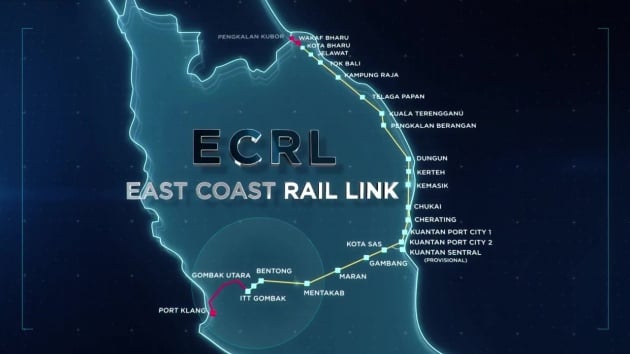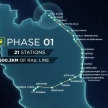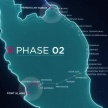Malaysia’s decision to engage China to build and finance the East Coast Rail Link (ECRL) was because it was offered the best possible deal, according to prime minister Datuk Seri Najib Tun Razak, in a report by The Star.
The deal includes a seven-year relief from servicing the loan as well as the lowest interest rate, noted Najib. “For seven years, there is no need to service the loan. By then, the ringgit would have appreciated, and the interest would be almost negligible,” he said during a ground-breaking ceremony at the ECRL Tunjung base camp on Wednesday.
The engineering, procurement, construction and commissioning (EPC) contract was awarded to China Communication Construction Company Ltd (CCCC), while the financing agreement will be with the Export Import Bank of China (EXIM). A special purpose vehicle under the Minister of Finance Incorporated, Malaysia Rail Link (MRL), is tasked as the project owner.
The ECRL project will consist of two phases, with Phase 1 of the railway featuring 21 stations running along a 600.3 km route, linking Kota Bharu in Kelantan to the Integrated Transport Terminal Gombak (ITT Gombak) in Selangor, a future interchange for the LRT Kelana Jaya Line.
The East Coast Rail Line will operate on this link, allowing passengers to travel between the two points in less than four hours using the planned inter-city rail service that operates at speeds of up to 160 km/h.
Meanwhile, Phase 2 will have an estimated length of 88 km covering two stretches, with the first from Gombak North until Port Klang, while the other will see a further extension between Kota Bharu and Pengkalan Kubor. In total, construction costs will amount to RM55 billion, which has been allocated by the government during Budget 2017. The ECRL is expected to be completed in June 2024.
Looking to sell your car? Sell it with Carro.



















AI-generated Summary ✨
Comments largely focus on skepticism about the China-claimed "best deal" for the ECRL project, citing concerns over high costs, questionable economic viability, and transparency issues. Many argue that Malaysia may be overpaying, especially given the tender process favoring Chinese contractors, with some suggesting local alternatives could be more beneficial. Some critics oppose the loan's long-term burden on taxpayers, highlighting potential for Malaysia to fall into debt traps or become a Chinese economic satellite. Others see the project as a strategic move to boost regional influence but warn it may not translate into local benefits or long-term development. Overall, sentiments lean toward skepticism, concerns over financial sustainability, and doubts about the project's true value for Malaysia’s future.